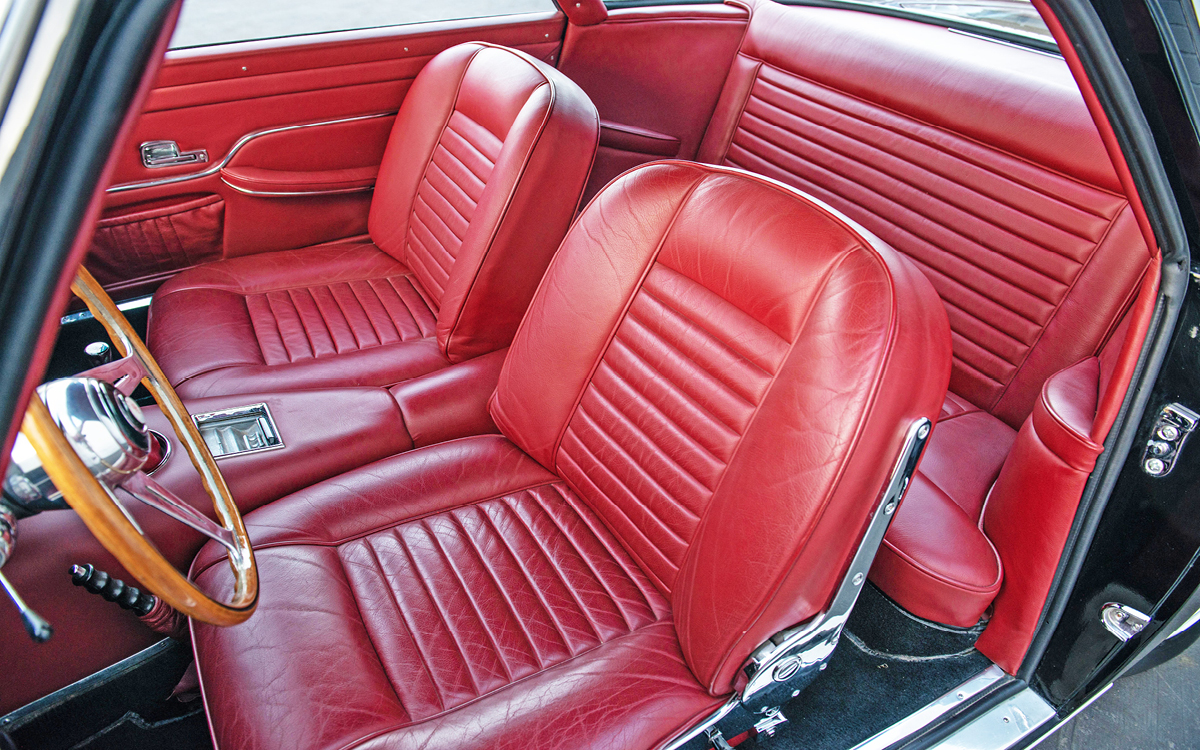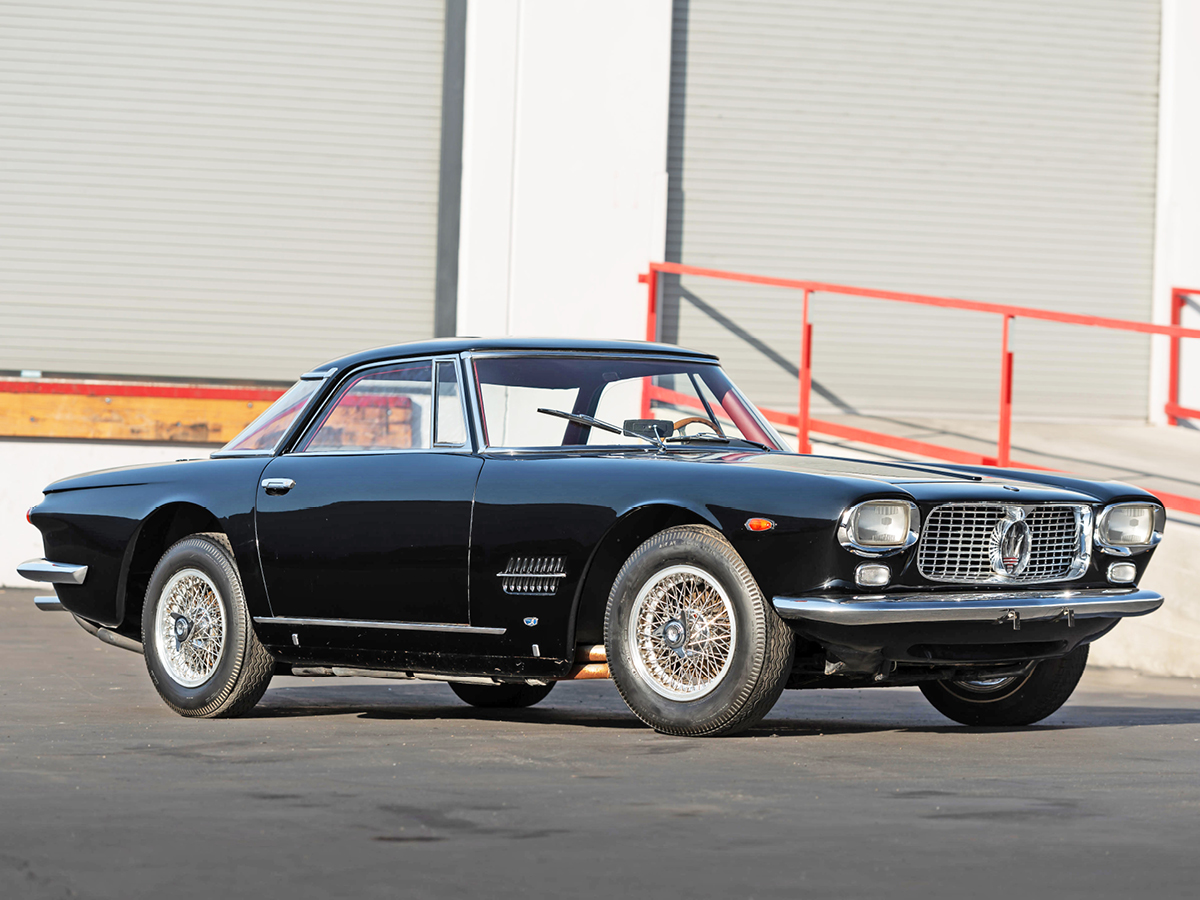Maserati Builds a Royal Street Racer
Like Ferrari, Maserati catered to actual royalty in the Fifties and early Sixties, building special models at the whim of kings and queens who could make the purchases with just the spare change fished from their royal couches. Such special requests could spur new business for said automakers, which might then make duplicates of the special cars.
The Maserati 5000 GT came about that way, and just 34 were made from 1959-1965. Of those, Allemano built bodies for 22, including the car offered by Bonhams at its Amelia Island auction, chassis #028. Fun fact: American rocker Joe Walsh is said to have owned one of the Allemano-bodied cars, #026, in the Seventies. It’s possible that the car inspired the timelessly profound lyric, “My Maserati does one-eighty-five. I lost my license, now I don’t drive” for his 1978 hit, “Life’s Been Good.” (The 5000 GT was good for about 170 mph, but it’s harder to rhyme.)
The Maserati 5000 GT offered by Bonhams is showing deterioration from an older restoration. Even in this condition, the auction house estimates the sale price to land between $500K-$800K.
Let’s take a look.
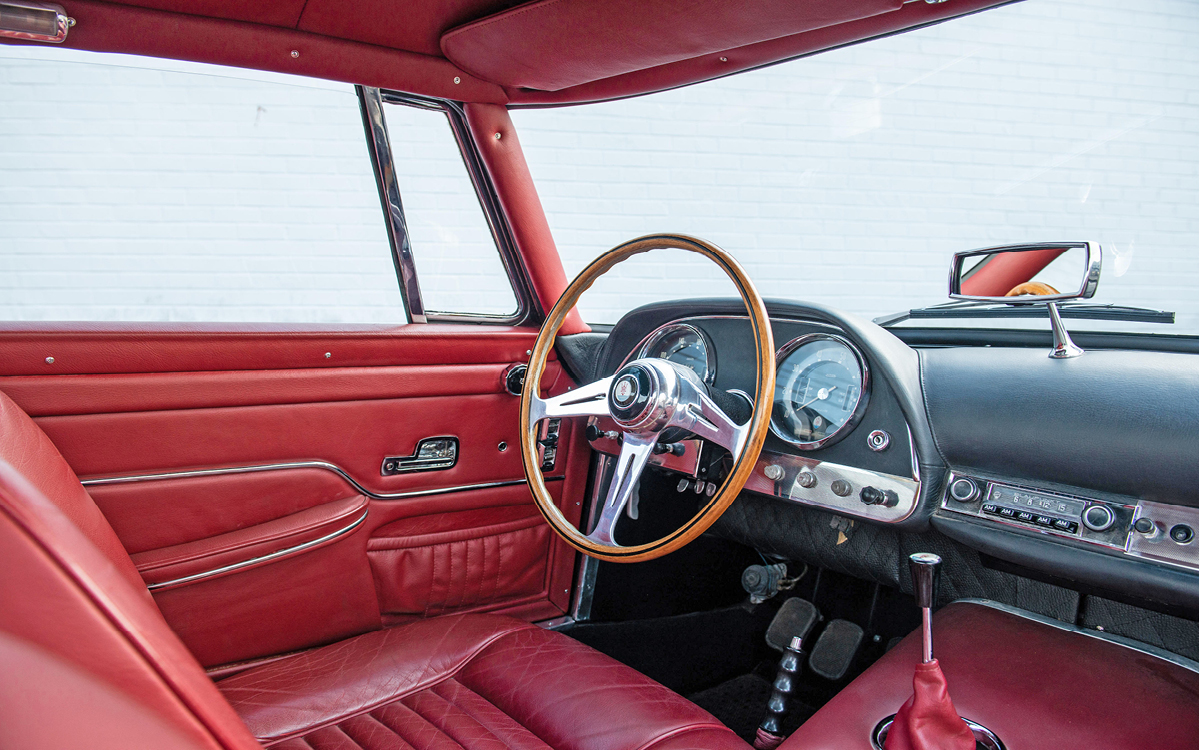
Direct Mail Success Story
The Maserati 5000 GT origin could seem somewhat prosaic. Even as Maserati had begun series production of its six-cylinder 3500 GT in 1957, the company was in some financial trouble. Legend has it that Omer Orsi, the son of Maserati owner Adolfo Orsi, sent wealthy potential clients brochures for the 3500 GT and the 450S racecar.
One recipient was Mohammed Reza Pahlevi, better known as the Shah of Persia, a.k.a. Iran. A noted car buff and collector with the country’s highest-paying job, the Shah had his embassy in Rome arrange a meeting with Maserati. It seems he had his own ideas about what kind of car he’d like.
The Shah asked Orsi and Maserati head engineer Giulio Alfieri to create a more potent version of the 3500 GT by installing the V-8 from the 450S racecar. They liked the idea. The resulting 5000 GT “Shah of Persia” featured a body by Carrozzeria Touring, and a second car using the same design went to South African construction magnate Basil Read, who owned the Kyalami racetrack there. Maserati later named a model for the track.
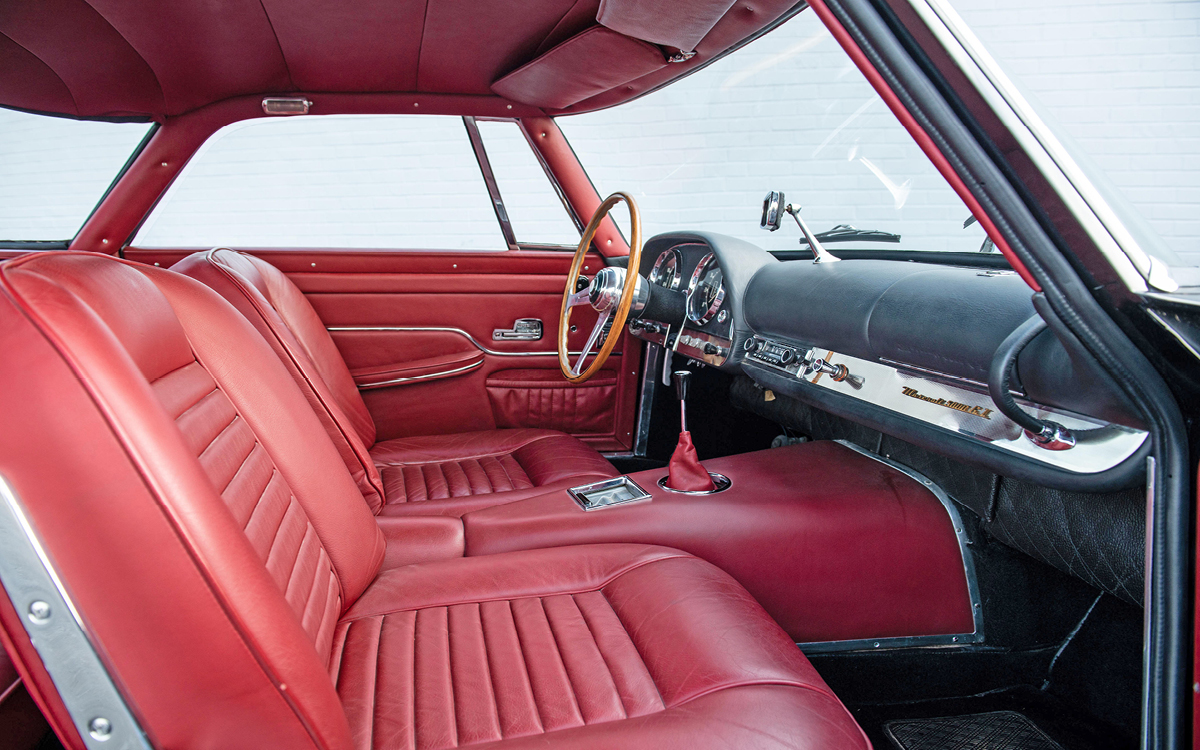
Maserati Muscle Car
The Maserati 4.5-liter V-8 was designed as a pure race engine, and it was known to be a bit of a bear even in “detuned” state for the 5000 GT road car. The specs included reducing the compression but compensating by increasing cylinder displacement to 4,937cc. So yes, the “5000” for 5-liter was really a 4.9-liter when correctly rounded down.
Like the race engine, the road car version used the dual overhead camshafts with noisy gear drive), dual-distributor ignition with two plugs per cylinder, and four twin-choke Weber carburetors. The chassis remained the same as for the 3500 GT, meaning independent front suspension but a live axle on leaf springs for the rear. The early 5000 GTs used the same front disc / rear drum brakes as the six-cylinder 3500 GT.
That was basically the same formula that American carmakers followed when turning family coupes into muscle cars in the Sixties, and the results were similar. With a 50-percent horsepower boost over the 3500 GT, the 5000 GT’s engine could simply overwhelm the chassis and brakes and become a handful on the road.
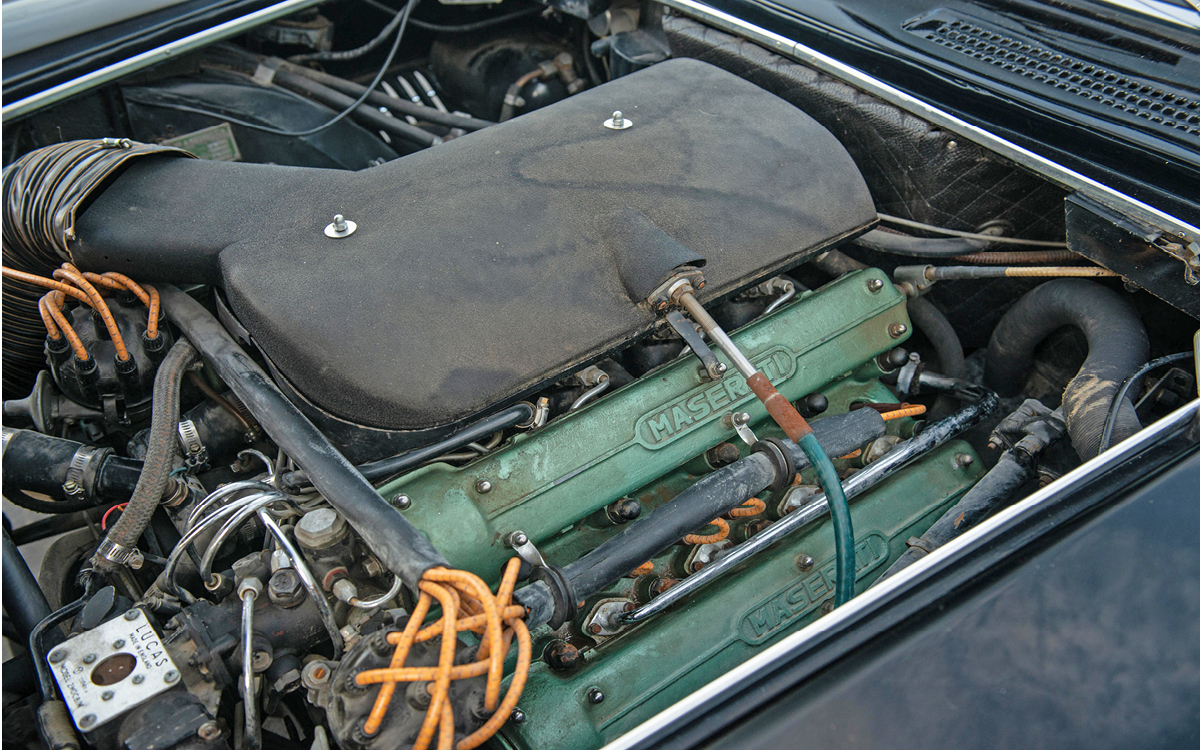
Go Where the Money Is
Maserati made the 5000 GT a limited-production elite model, attracting buyers who could easily swing its $17,000 price (about $170,000 today). These included Aga Khan IV, Imam of the Nizari Ismailis, a denomination within Shia Islam. About 26 years old at the time, he bought the second of three Frua-bodied coupes made.
Other 5000 GT buyers included Fiat scion Gianni Agnelli, American sportsman and racer Briggs Cunningham, actor Stewart Granger and Mexican President Adolfo López Mateos. Maserati named the 5000 GT’s 1966 successor “Mexico.”
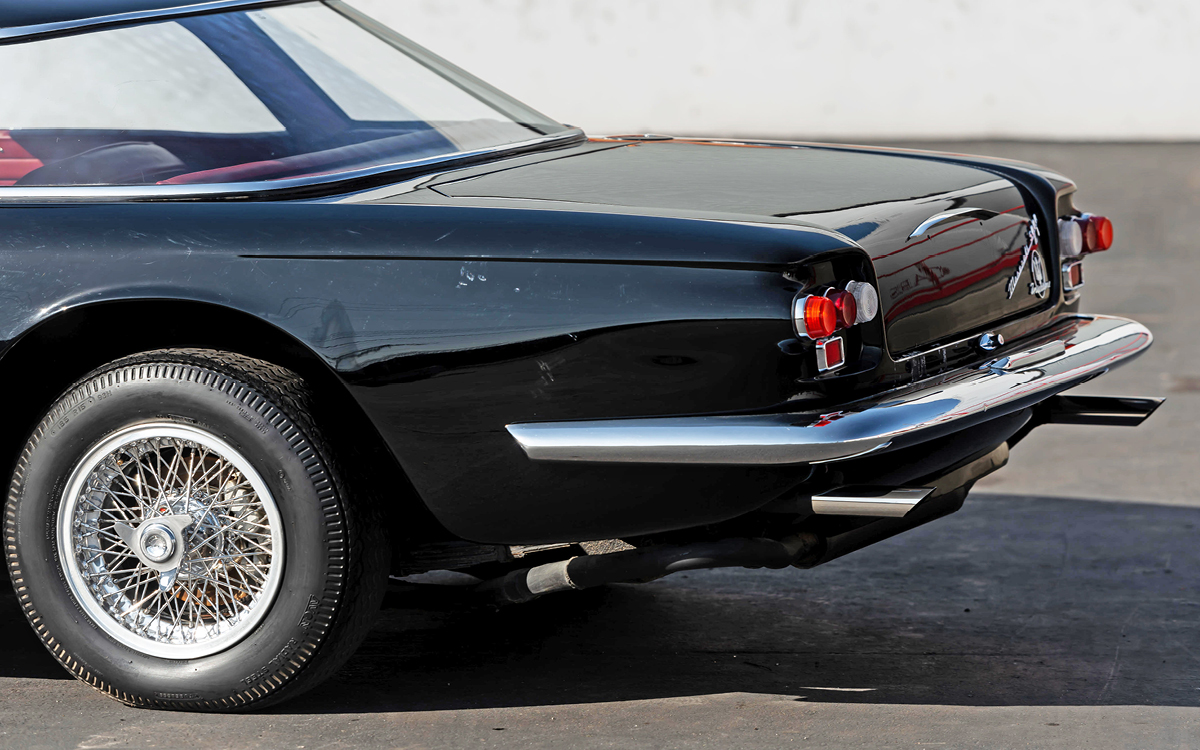
Taming the Beast, Almost
In 1960, Maserati updated the 5000 GT to make it a bit more road friendly. Using a smaller bore and longer stroke changed the engine’s cylinder displacement slightly to 4,940cc. In these Series II cars, Lucas mechanical fuel injection replaced the Weber carburetors, and quieter chain-driven camshafts helped to civilize the engine a tad more. Horsepower was a solid 340, which matched the 5.0-liter V-12 that Ferrari had used in its exclusive Superamerica models in the late Fifties and early Sixties.
A five-speed ZF transmission with an overdrive top gear and ventilated four-wheel disc brakes also helped to make the later 5000 GT a more modern traveling companion.
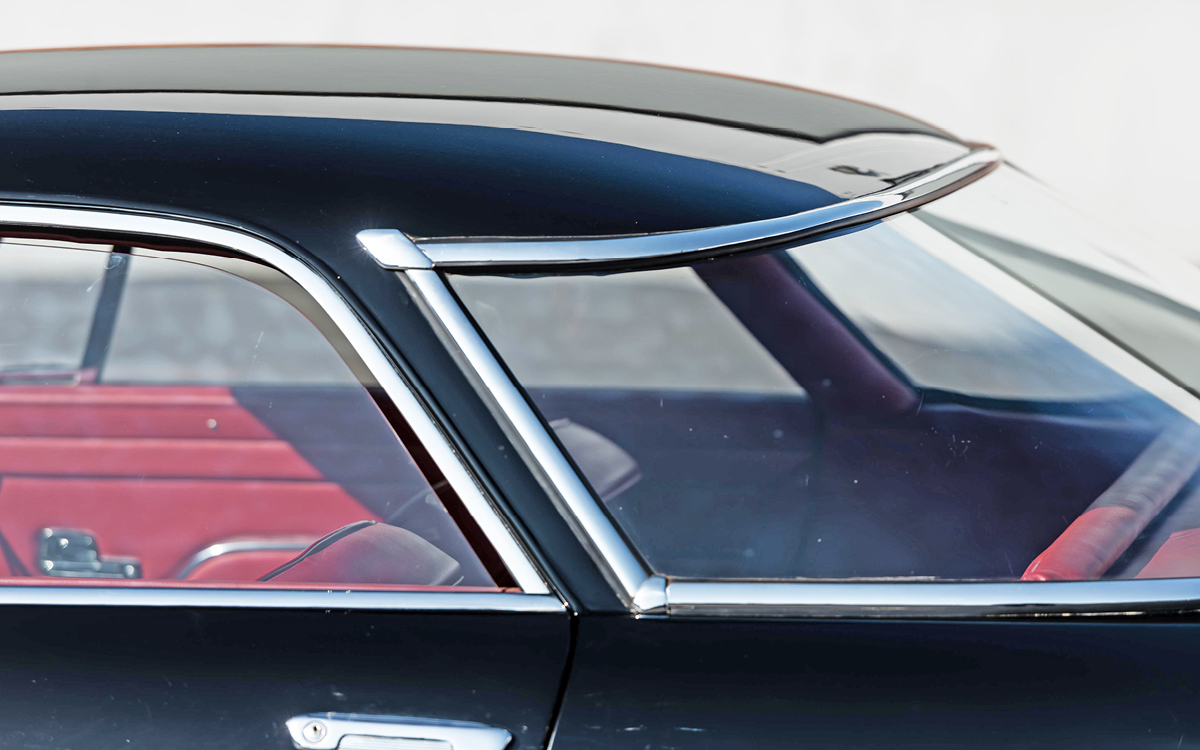
Project Car
Bonhams is familiar with the 1962 Maserati 5000 GT on offer, as it sold the car once before, in 2004. The Maserati apparently received a restoration in the late Eighties or early Nineties. As the auction listing notes, however, the car likely sat unused for a long time and “would require considerable refurbishment once again to be shown.”
The listing notes evidence of corrosion in the lower body, as well as some scratching in the paint. The interior still looks good in photos, though Bonhams notes some fading. Bonhams explains that documentation had previously stated that the car retained its numbers-matched engine throughout its history but the number has not been found on the engine today.
Pivotal Model A car born from a royal request, the Maserati 5000 GT helped solidly establish the Italian automaker’s expanding road car program among wealthy and influential clientele, including the new royalty of the age, rowdy rock stars. It also set up a three-way rivalry with Ferrari and Lamborghini once the latter joined the fray in 1964. As such, the 5000 GT, with just 34 made, was one of the marque’s most consequential models.
